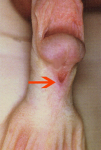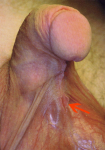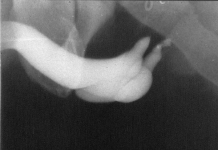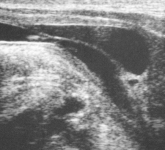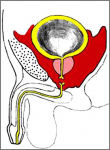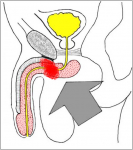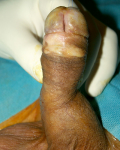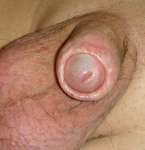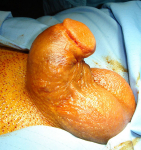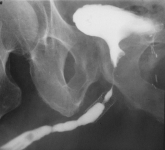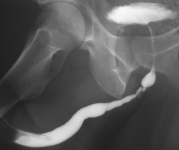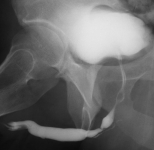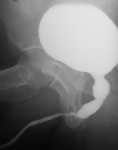Etiology of male urethral strictures
The male urethra is a tubular structure about 18 cm in length, and it may present an occlusion or reduction of his caliber that is called urethral stricture. Male urethral stricture may be due to congenital abnormality or acquired diseases.
Etiology of congenital male urethral strictures
Hypospadias
| Hypospadias is a condition manifested by three separate anatomical problems: abnormal location of the urethral meatus, penile curvature and abnormal foreskin development or dorsal-hooded foreskin. It is the most common congenital anomaly of the penis, occurring in 1 out of 300 live births, with a multifactorial etiology: genetic susceptibility plus endocrine disruptors. Recent studies have shown that the incidence of hypospadias has been increasing in Western countries, and even higher figures are expected for developing countries and in the third world. There are four type of hypospadias: glandular, balanic, penile and scrotal. Hypospadias may be associated with external urinary meatus strictures or penile/bulbar urethral strictures. |
Valve
The urethral valve is an anomaly of the urethral mucosa, than can cause partial or complete obstruction of the urethra. The urethral valves are located in the posterior urethra and are often associated with complex malformations of the kidney, ureter and bladder. The urethral valve is rarely located in the penile or bulbar urethra. They can be located using ultrasonography during pregnancy.
Diverticulum or urethral duplication
| Congenital urethral diverticulum or duplication are normally located in the bulbar urethra. Dilation of the bulbar cause postvoiding dribbling during micturition. |
Etiology of non-congenital male urethral strictures
Trauma
Any type of traumatic urethral lesion or disruption can cause a urethral stricture.
|
Infection
The most frequent cause of urethral stricture is the blennorrhagia.
Disease of the penile skin
| The most frequent cause of urethral stricture is Lichen sclerosus. LS cause destructive scarring that can lead to urinary and sexual problems and a decrease of quality of life. Symptoms are pruritus and soreness, difficulty in retracting the foreskin and a poor urinary stream. Examination shows typical flat, atrophic, ivory to white colored papules that coalesce in plaques of varying sizes, commonly with a non-retractile prepuce and meatal stenosis. |
Surgery for hypospadias repair
| Many patients who had undergone hypospadias repair during childhood developed a urethral stricture as an adult. These patients are classified as “Failed hypospadias repair”. |
Urethral instrumentation
| Endoscopic procedures: any type of endoscopic urethral instrumentation (TURP,TUIP,HOLEP) may cause a urethral stricture. Urethral catheter: any type of urethral catheter may cause urethral strictures. The incidence of a urethral stricture following catheter is high in patients who underwent cardiovascular surgery or who were cared for in the resuscitation recovery room. |
Cancer
Any type of primary urethral tumor may cause urethral strictures. Primary penile cancer may cause urethral involvement and stricture.
Idiopathic
| It is sometimes not possible to establish the stricture etiology in some patients. These “strictures of unknown etiology” have been related to unrecognized minor trauma occurring in childhood. |

